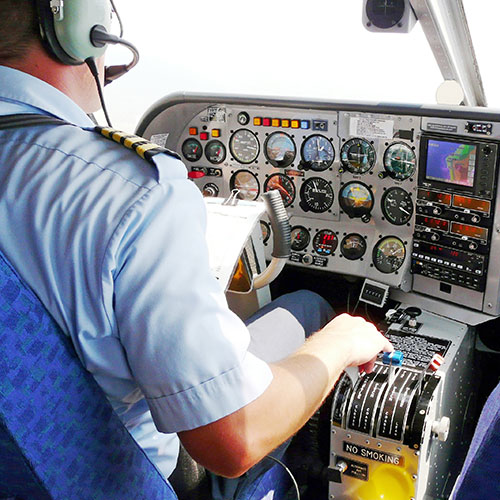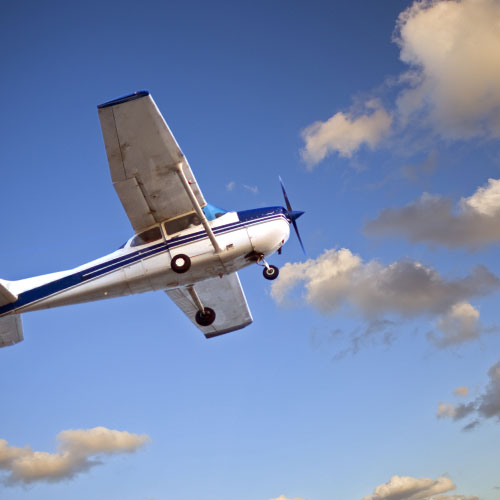FEATURED HEADLINES
Food: Ready, Set, Grill
FEATURED FOOD
Ready, Set, Grill
Barbecue Competition Returns to Brookline
Written By Angie Sykeny (asykeny@hippopress.com)
Images: Stock Photo
Whether you’re seasoned in the sport of competitive barbecuing or you’re curious to see what it’s all about, you can put your outdoor cooking skills to the test at the Brookline Tailgate & Barbecue/Grilling Cook-off, happening Saturday, July 15, and Sunday, July 16, at the Brookline Ball Park.
The event will feature two Northeast Barbecue Society-sanctioned competitions; the Grilling Competition on Saturday and the Barbecue Competition on Sunday. There will also be a Junior-Q kids’ barbecue chicken competition and a variety of food and activities for attendees.

The NEBS competitions are open to both amateur and professional barbecuers.
“We’ve had people who have owned restaurants, and we’ve had backyard barbecue people who want to try their hand at competitive barbecuing,” said Sheryl Corey, president of the Brookline Fire Department Association, which is hosting the event in partnership with NEBS. “Some like to stay at the tailgate level, but others move on to bigger competitions. We’ve even had a team that started at our competition and went on to win at the Jack Daniel’s World Championship.”
The Grilling Competition will have four categories: pizza, beef, dessert and mystery. The Barbecue Competition will have pork ribs and chicken wings categories.
Teams must bring their own ingredients for all categories except the mystery category, in which they’ll be given a basket of mystery ingredients to work with. They will then prepare and cook their dishes on site at the event to be judged by a panel of NEBS-certified judges and others from the competitive barbecue scene. Judges will score each dish by its appearance, taste and tenderness.
“Usually these teams are very, very good,” Corey said. “Everyone has their own rub or sauce and their own way of smoking everything, and they won’t give out their secrets. They put a lot of money and time into this.”
Additionally, the barbecue chicken wings category will have a people’s choice winner; on Sunday afternoon, attendees can buy five competition chicken wings for $5 and vote for their favorites to win.
First-, second- and third-place winners will receive cash prizes and trophies while fourth- and fifth-place winners will receive medallions. Winners may also count their scores toward the NEBS 2017 official rankings if they wish.
Though many of the participants are serious competitors, Corey said, the competition is welcoming of more recreational competitors and first-timers just looking to give it a try.
“If there are people out there who are thinking about doing a barbecue competition, this is the perfect competition for them to start at and see if it’s something they’d like to get into,” she said. “Barbecue people are very friendly and always willing to lend a hand and answer a question and give tips to new people, without giving away their recipe, of course.”
Those not competing can come watch the action, vote for the people’s choice winner and enjoy food concessions including hot dogs, hamburgers and pulled pork sandwiches. Other food events include a barbecue chicken dinner on Saturday night (tickets required), an all-you-can-eat pancake breakfast on Sunday morning and a blueberry bash on Sunday afternoon with blueberry pies and other treats for sale.
Brookline Tailgate & Barbecue/Grilling Cook-off
When: Saturday, July 15, and Sunday, July 16
Where: Brookline Ball Park, 130 Milford St., Brookline
Cost: Free admission
Visit: brooklinefd.com
Competitions
NEBS Grilling Competition (pizza, beef, dessert and mystery) - Saturday, July 15, $125 to enter
NEBS Barbecue Competition (pork ribs and chicken wings) - Sunday, July 16, $125 to enter
Entry in both the Grilling and Barbecue competitions costs $225.
Junior-Q (chicken) - Sunday, July 16, $10 to enter, open to kids age 16 and under
Awards ceremony - Sunday, July 16, around 4 p.m.
Food & Activities Schedule
Saturday, July 15
9 a.m. - Horseshoe tournament
11 a.m. to 2 p.m. - Food concessions
11 a.m. to 10 p.m. - Brookstock Music Festival
Noon to 5 p.m. - Brookline Fireman’s Muster
5 to 7 p.m. - Barbecue chicken dinner (tickets purchased in advance at fire station cost $7 for a quarter chicken and $10 for a half chicken; tickets purchased the day-of at the field cost $9/$12)
Sunday, July 16
8 to 11 a.m. - Pancake breakfast ($5 all you can eat)
9 a.m. to 3 p.m. - Cornhole tournament
11 a.m. to 2 p.m. - Snack stand open
Noon to 1:30 p.m. - People’s Choice chicken wings (get five chicken wing samples for $5 and vote for your favorite)
11 a.m. to 3 p.m. - Brookline Women’s Club Blueberry Bash and Bike Parade
News: Just Plane Fun Cover Stories *
FEATURED NEWS - * COVER STORIES *
Small Airports
Hidden Gateways to the Clouds
Written By Ryan Lessard (news@hippopress.com)
Images: Stock Photo
Many towns and cities in New Hampshire have airports that you probably didn’t know existed. Primarily, they offer a travel destination to recreational flyers and business commuters, a place to keep their planes, repair and refuel.
While Dave Rolla, the airport manager at Concord Municipal Airport, can’t speak for every airport in the state, he says it’s likely that many of those small fields also offer flight training services.
“It’s certainly pretty common that where there are airplanes there are people who are willing to teach people how to fly,” Rolla said.
General Aviation
These so-called general aviation airports are more common in New Hampshire than most realize. There are 25 airports in the state, 15 public and 10 private.
“The biggest thing to understand is, geographically speaking, it’s amazing that New Hampshire has that many airports that can accommodate aircraft,” Rolla said.
Only three of them (Manchester, Portsmouth and Lebanon) are classified “Part 139” airports, meaning they offer air carrier or passenger service.
Manchester and Lebanon are also bigger, with 10,000-foot runways.
That classification means they have TSA security and baggage security. Rolla said that after the attacks on Sept. 11, 2001, federal security rules for airports effectively made it impossible for smaller airports to grow to the level of a Part 139 because of the prohibitive costs associated with the security requirements.
So the remaining airports, like the ones in Concord, Nashua, Laconia, Keene and Jaffrey, rely heavily on recreational and business flights.
Plane Types
Rolla said his company, Concord Aviation Services, is the main operator of the airport, which is owned by the city, and one of five organizations that lease space there. There’s also the New Hampshire Army

National Guard, New Hampshire State Police and two private hangar operators.The Guard makes up most of the money paid to the city for its use of the airport, from hangar leases, fuel and outside parking. But of the estimated 10,000 customers Concord Aviation Services deals with regularly, Rolla said the vast majority are recreational vehicles.
“By sheer number of operations, I would say the bulk of New Hampshire airports are being visited by recreational pilots in small airplanes,” Rolla said.
He estimates 90 percent of the planes are small planes like Cessnas, single or twin engines with fewer than 12 seats.
According to the state Aeronautics Bureau, the state had 1,026 licensed aircraft in calendar year 2016.
Many use the airport for long-term parking. Rolla said Concord Aviation Services charges $45 a month for a small plane to stay at the airport. They also rent out planes.
The remaining 10 percent are mid-sized private jets for commercial use. Business people can make more efficient use of their time by flying between company locations or business meetings than driving there.
A common jet is the Bombardier Global Express 6000, and Rolla said he sees them in Concord regularly.
“If they’re a company that’s working internationally, that’s a common aircraft that they use,” Rolla said.
They can operate easily on 6,000 feet of runway and are able to fly internationally with a range of 6,000 nautical miles. But even though they are the less common plane, they spend more at the airport.
“In terms of dollars, it’s split the other way around. Because that Global Express that comes in, those guys can say, ‘Can you roll up that fuel truck and empty it into our plane?’ And it’s a 3,000-gallon fuel truck,” Rolla said.
To put that in perspective, a small plane can fly for an hour and burn 10 gallons.
Small airports like Concord’s can sometimes even accommodate larger carriers in a pinch, though it’s not practical. Rolla said the Secret Service once examined the airport and determined that a Boeing 757 could land there if it needed to.
Traffic Control
The Nashua airport at Boire Field is one of the few small airports with its own control tower, kept running partly with federal dollars.
But small, general aviation airports generally operate just fine without having a ground tower on site.
Rolla said on clear days when it’s uncontrolled airspace, pilots don’t need to file a flight plan with the FAA. They tap into a shared radio station that is local to the airport they’re landing at or taking off from called a Common Traffic Advisory Frequency and everyone just announces what they’re doing on the channel.
In this sense, it’s fairly self-regulated. Rolla said Concord is a “Class E” airspace, which means it’s generally less densely populated with aircraft, so there’s less need for a central traffic controller.
On days when visibility is low, pilots are under instrument flight rules, and they have to file flight plans and keep in contact with FAA traffic controllers.
Pretty much all of northern New England airspace is managed by the Boston Consolidated TRACON station in Merrimack.
If you’re taking off from an airport that has a tower then you communicate with them until take-off, at which point you’re handed off to the FAA controllers at the TRACON station.
Learning to Fly
Flight Lessons & Pilot's Licenses Let You Fly on Your Own
Written By Kelly Sennott (ksennott@hippopress.com)
Images: Stock Photo
If you’ve ever dreamed about flying a plane, it may be more attainable than you think.
Here’s a rundown of what it takes to get in the air on your own.
Pilot’s Licenses
There are two main types of pilot’s licenses: private and commercial. A private license allows you to fly yourself and your passengers recreationally.
“That’s the most popular license,” said Michael Johnson, flight instructor for Concord Aviation Services. “That’s what people get if it was always a dream of theirs to fly a plane and be a pilot and they want to get into it as a hobby.”
To earn a private pilot’s license, you must complete a minimum of 40 hours of flying time, which must consist of at least 20 hours flying with an instructor and 10 hours of supervised solo flying.

A commercial pilot’s license allows you to fly for hire. Transporting people or cargo, aerial photography, scenic flights and flight lessons are a few of the services you could offer as a commercial pilot. This license requires 250 hours of flying time, also consisting of at least 20 hours with an instructor and 10 hours solo.
In addition to the flying hours, a prospective pilot must pass a test that includes a multiple choice written knowledge test, an oral interview and a practical flying test with an examiner.
“The pilot examiner will ask you questions and try to figure out what you know,” Johnson said. “Then, he’ll run you through various maneuvers like take-offs and landings and turns so you can demonstrate that you know how to fly.”
Flight Lessons
While each flight training center does things a little differently, there is a basic structure that most of them follow. Lessons are typically one-on-one with the student and instructor and run anywhere between 45 minutes and an hour and a half and cost between $100 and $250.
“The cost per lesson depends on the lesson for that day and how long it is and what the student is doing,” Johnson said. “What we tell people here is that it’s going to cost them around $8,000 to $10,000 total to earn their license.”
The first half of the first lesson usually consists of ground work and pre-flight instruction. Students learn about the anatomy of the plane, its controls, navigation and communications systems, flight terminology, how to inspect the plane, how weather affects flight and other fundamentals. The second half of the lesson is a hands-on run-through of basic maneuvers such as driving the plane on the ground, taking off, increasing altitude, steady flying, making shallow turns, descending and landing.
During flight, the instructor sits next to the student and has access to the same controls so he can assist with the maneuvers if needed.
“They’re there to help, but for the most part, the student is in control,” Johnson said. “Those first couple lessons are about getting comfortable with flying and getting used to what it’s like to control an airplane.”
The lessons to follow consist of practicing and perfecting the basic maneuvers and learning more advanced techniques like making hard turns, flying at night and flying in cloudy skies. The instructor may also conduct a briefing and analysis of the day’s lesson with the student.
“We spend time prior [to the flight] to discuss what they’re going to do, and I have them repeat it back to me so I know they understand. It helps them to visualize it first so it’s not overwhelming when they do it in the air,” said Steve Brouillette of Brouillette Aviation Training in Nashua. “Then afterwards we assess what took place and talk about fine-tuning things for the next flight.”
Once the student is confident in his ability to fly, he can start flying without an instructor in the plane. An instructor still monitors the flight from the ground and stays in constant communication with the student as he flies.
“The whole point is to become independent,” Brouillette said. “Letting them do it on their own is the only way they can build the proficiency and confidence needed to become independent.”
While only training time spent in the air counts toward earning a pilot’s license, there are also ground aviation courses and courses online that you can take to help you prepare for the written knowledge portion of the license test.
Or, if you just want to see what flying is like without spending the time and money required to earn a license, you can take a few individual flight lessons for fun.
“We get people who do that quite a bit. They just want the experience but not the license,” Johnson said. “They can take a few lessons, and if it turns out they really like flying, then they can go on and get their license.”
Learn to Fly
Here are some local airports and aviation centers offering flight training.
• 409th Aviation (Manchester-Boston Regional Airport, 1 Airport Road, Manchester, 547-3000, 409thaviation.com)
• Air Direct Airways (Nashua Municipal Airport, 125 Perimeter Road, 882-5606, airdirectairways.com)
• Brouillette Aviation Training (Nashua Municipal Airport, 95 Pine Hill Road, Nashua, 595-9059, flyatbat.com)
• Concord Aviation Services (Concord Municipal Airport, 71 Airport Road, Concord, 228-2267, confbo.com)
• East Coast Aero Club Nashua (Nashua Municipal Airport, 117 Perimeter Road, Nashua, 595-1395, eastcoastaeroclub.com)
• Emerson Aviation (Laconia Municipal Airport, 65 Aviation Drive, Gilford, 293-7980, emersonaviation.com)
• Hampton Airfield (9A Lafayette Road, Route 1, North Hampton, 964-6749, hamptonairfield.com)
• Harvest Aviation (Nashua Municipal Airport, 129 Perimeter Road, Nashua, 882-1113, harvestaviation.com)
• Monadnock Aviation Flight School (80 Airport Road, Keene, 357-7600, monadnockaviation.com)
• Sky Bright (Laconia Municipal Airport, 65 Aviation Drive, Gilford, 528-6818, skybright.com)
Not Your Average Plane Ride
Scenic Plane Rides in New Hampshire
Written By Kelly Sennott (ksennott@hippopress.com)
Images: Stock Photo
The best way to get to know a place is by viewing it from up in the air — so say New Hampshire scenic flight pilots.
Harvey Sawyer, who runs the Silver Ranch Airpark in Jaffrey, said via phone his airfield is more like a farm than an airport. There’s no security, no baggages, and nearby are horses and an ice cream shop. You don’t even have to fly; he welcomes people to just come out, unfold a lawn chair and watch the sun go down behind Mount Monadnock nearby.
“We’re a people place. Lots of [airports] you go to, you have to stand behind barbed wire. We’re not that kind of place,” Sawyer said. “I always tell people who say they don’t like to fly, [they] will after [they] fly with me. And most people do. It’s smooth. It’s like riding in a car with the windows rolled down. … You don’t feel that high, and you don’t feel the speed. You just have this beautiful panoramic view.”

The Silver Ranch Airpark, a family-run business founded in 1946, features a 3,000-foot runway and specializes in personal and executive charters and scenic flights around the Monadnock region. Sawyer, who’s been flying for 50 years now, said hot spots on the tour include local water bodies like Contoocook Lake, Gilmore Pond and Dublin Lake. The main attraction is Mount Monadnock, which you get so close to you can see the hikers slowly trailing up. If there’s something in particular you want to check out, just ask.
“It’s totally different because everybody gets the window seat and we’re flying low enough so that you can see things really well,” Sawyer said. “And as a passenger, you’re in control. … We love to meet people and share the joy of flying. I always try to tell people, I still think it’s magic after many, many years of flying.”
The best times to go are usually mornings and evenings, when light is great and winds have calmed. (Though when in doubt, call ahead of time.) The Federal Aviation Administration defines a scenic flight as going no more than 25 miles from the departure location, but because Sawyer is able to offer charter flights, he can also take passengers on longer rides to see sites like Mount Washington or the coastline.
In the Lakes Region, you have a couple of options for scenic flying. Dave French started Lakes Region Seaplane Services in 2010 after years of flying large planes. He takes off and lands on Lake Winnipesaukee, and common sights include Weirs Beach, Paugus Bay, the Ossipee Mountains, Mount Major, Castle in the Clouds and Rattlesnake Mountain. If the air’s calm enough, he might let a passenger take the wheel.
“That’s the reward of this. … To have a seven-year-old maneuvering the plane with his parents behind him, and to see the look of awe on his face,” French said.
You can also take a scenic flight via Emerson Aviation out of the Laconia Airport. Trips are around the lake, though Linda Emerson, who runs the company with her husband, said passengers often like trolling around to spot their homes or where they’re staying nearby. It’s so different, she said, from anything you’ve experienced before.
“It’s beautiful. It’s not like when you fly the airlines,” Emerson said. “You’re flying much lower. … The wings are above where you’re looking out the window, and you’re at an altitude where you can see everything.”
Scenic Plane Rides
Emerson Aviation 118 Kimball Road, Gilford, 293-7980, emersonaviation.com
Lakes Region Seaplane Services 1290 Union Ave., Laconia, 387-7575, seaplanetours.net
Silver Ranch Airpark Jaffrey Airport, 190 Turnpike Road, Jaffrey, 532-8870, jaffreyairport.com
White Mountains Scenic Flights Mount Washington Regional Airport, 5 Airport Road, Hangar 16, Whitefield, 616-9246, verticalventuresaviation.com
Monadnock Aviation 80 Airport Road, Keene, 357-7600, monadnockaviation.com
La Belle Avion Scenic Flights and Aerial Photography Moultonborough Airport, 566-1808, facebook.com/LaBelleAvion
Full Flight
A Road Map of New Hampshire’s Aviation History
Written By Matt Ingersol (listings@hippopress.com)
Images: Stock Photo
The history of aviation and flying in New Hampshire goes back more than a century, to before the invention of the first successfully flown airplane by the Wright Brothers in 1903. This timeline includes some of the most important people and innovations in the Granite State’s aviation history, several of which are preserved and commemorated today through exhibits at the Aviation Museum of New Hampshire in Londonderry.
The First Flight
According to Wendell Berthelsen, director of operations for the Aviation Museum of New Hampshire, the earliest record of anyone flying any type of aircraft in New Hampshire was a hydrogen gas-powered balloon by French inventor Jean-Pierre Blanchard in Portsmouth in 1796. Blanchard had successfully flown the balloon for the first time in Paris 12 years earlier, in 1784, and was in the Granite State as part of several “aerostatic experiments” performed across the U.S. between 1793 and 1797. He charged visitors $1 admission to ride in the balloon.

Civil War Reconnaissance
Considered to be a leading pioneer in ballooning, Jefferson native Thaddeus Sobieski Constantine Lowe is credited with organizing the Lincoln Balloon Corps, which performed aerial reconnaissance during the years of the Civil War and used balloons that were fueled by coal.
“He actually did surveillance for the White House for the North to see what the South was doing [during the war],” Berthelsen said. “He would bring a telegraph operator in the basket with him and report back to the White House what his findings were.”
A vintage balloon basket, with a mannequin model of Lowe dressed in Civil War-era attire, is today on display in the Museum.
NH’s First Airplane
The Wright Brothers would invent the first successfully flown airplane in 1903, and it was just seven years later when the first airplane flight took place over the Granite State. It was on September 27, 1910, at the Rochester Fairgrounds, according to Berthelsen. Archibald Hoxsey, who worked for the Wright Brothers at the time, was the pilot.
The flight was one of several “Air Meets” held across the country throughout 1910, made up of exhibition teams of aviators employed by either the Wright Brothers or by aviator Glenn Hammond Curtiss to travel and introduce the public to the airplane. These Air Meets also ended up being the first airplane flights at several other states, including North Dakota, which was also flown by Hoxsey, as well as Vermont, just three days earlier than New Hampshire.
“The plane was shipped initially up to New Hampshire by train before it took flight at the fairgrounds,” Berthelsen said. “[Hoxsey] was one of several Wright Brothers pilots who came up to fly their airplanes.”
The First Commercial Airport
The building that houses the Aviation Museum of New Hampshire is itself a part of the Granite State’s aviation history, Museum Executive Director Jessica Pappathan said.
Construction to build an airport in Manchester began in June 1927. Just five months later, in November, Robert Fogg became the first person to take off from and land an aircraft at that airport. Fogg was also the first private resident in the Granite State to own a licensed aircraft.
Other Granite State firsts included aviatrix Bernice Blake, who became the first licensed female commercial pilot in the state in 1931, and the Doodle Bug, the first biplane designed and built in the state, in 1929.
In 1940, the airport was named an Army Air Corps Base, with more than 100 additional buildings constructed in just 90 days.
“[The terminal] officially went out of service in 1962, but was used for other purposes for some period of time,” Berthelsen said. “During the expansion of the airport in the mid-to-late ’90s, it was eventually ... converted into a museum.”
The terminal reopened officially as a museum in 2004 when its foundation was moved across two runways to the airport’s southeast side, where it is found today, Berthelsen said.
A Homegrown Hero
Derry native Alan Shepard Jr., who became the first person in the United States to travel in space in May 1961, rode his bicycle to the Manchester Airport as a teenager to sweep out its hangars in exchange for flying lessons, Berthelsen said.
“Carl Park Sr. was the one that taught him how to fly out of a hangar — he operated the terminal buildings at the time,” he said.
Shepard would go on to graduate from Pinkerton Academy in Derry and then the United States Naval Academy, serving in the Navy during World War II and later becoming a test pilot in 1950. Nine years later, he became selected by NASA as one of the original Mercury 7 astronauts.
“We have a couple of panels in the museum about him, as well as a plaque dedication in our terminal building,” Berthelsen said. “He’s also talked about on a number of our tours.”
Arts: Another World
FEATURED ARTS
Another World
VA Medical Center Offers Free Art Programs for Vets
Written By Kelly Sennott (ksennott@hippopress.com)
Images: Stock Photo
Every Monday afternoon, Amherst artist Elaine Farmer drives 30 minutes to the Manchester VA Medical Center to teach a free art class to New Hampshire veterans. When she arrives, they work on whatever they please — drawings, paintings, even coloring books.
“She’s wonderful. She doesn’t push you in any direction you don’t want to go in. There are no rules. You do what you want to do,” said Bill Hines, a Merrimack resident who’s been a regular at Farmer’s classes.
Hines is working on colored pencil drawings of flowers, inspired by his real-life occupation in the horticultural industry. He dabbled in art in high school and attended the Vesper George School of Art a year before joining the Army and serving in Vietnam. When he learned of Farmer’s class, he jumped right in.

“I go because I like to be involved,” said Hines, who does a lot of volunteer work and gardening in his free time. “I like to stay busy, and I like talking to people, especially veterans.”
Farmer, who served for 17 years as an Air Force wife, began volunteering at the VA Medical Center in 2014, then teaching art classes a year and a half ago. She knew it would be beneficial for veterans. For most people, art acts as an escape, an entrance into another world. As you work, everything else falls away.
“There are a lot of programs out there to help vets, like Wounded Warrior, but none that really focus on arts and healing,” Farmer said. “The ones who have stayed with me a while now talk about it feeling meditative. Time flies by as they’re working on their project, whether it’s a landscape or seascape or a flower. … They continue to show up because they know it’s a good feeling.”
Debra Krinsky, the VA’s voluntary services officer, said she’s very happy with turnout and has set aside funds to purchase sketchbooks and pencils for newcomers, having seen firsthand the way art can empower people and cause them to see things in new ways. She remembers sitting in on a ceramics workshop when she worked for the White River Junction VA Medical Center. One vet sculpted what he imagined his cancer looked like. When it came time to glaze, Krinsky pulled him aside.
“If you put this in the kiln, it’s going to be permanent and solid as a rock,” Krinsky said to him. “You’re fighting cancer. You may want to take this to your local lake, or the ocean, and chuck this puppy into the water so it disintegrates. Because that’s what you want to do to this cancer.”
The man’s eyes flew wide open. And that’s what he did.
Krinsky said via phone the VA offers lots of different clinics and workshops, but she’s still looking for more artists — or people expert in anything — to teach or perform for vets. Some vets just haven’t found their right medium yet. Hines thinks keeping busy — with art or some other hobby — is essential for vets, if just to get out of their own heads.
“By going there and having someone like Elaine help you and guide you, you can get out of all that other thinking you shouldn’t be doing. It slows your mind down,” Hines said. “I think more information has to get out to the public and to the veterans about what’s available to them. … You don’t have to be an accomplished artist to take a class. If you just want to learn, that’s why Elaine is there.”
Sign Up for a Class
Classes are at the Manchester VA Medical Center, 718 Smyth Road, Manchester, Mondays from 12:30 to 2:30 p.m.; contact Debra Krinsky by emailing debra.krinsky2@va.gov or calling 624-4366, ext. 6419, to sign up
Music: Idle Hands Make Top Pop
FEATURED MUSIC
Idle Hands Make Top Pop
Donaher Celebrated Debut CD at Shaskeen
Written By Michael Witthaus (music@hippopress.com)
Images: Courtesy Photo
I Swear My Love Is True is a juicy serving of power pop pleasure; the debut CD from Donaher will please fans of Jimmy Eat World, Fountains of Wayne and similarly buoyant pre-millennial music. There’s a guest appearance from ex-Get Up Kids singer Matt Pryor; that and lyrics about romance at the mall (“it can be the two of us/I’ll buy you an Orange Julius”) make it clear where the Manchester quartet’s sweet spot lay, decade-wise.
Their bio page confesses to an over-affinity for My So-Called Life reruns, but there’s more to Donaher than Blockbuster nights spent with girls named Heather, Mandy and Courtney. Band front man Nick Lavallee said recently that the 10-song collection is a cycle, representing his difficult personal journey of the past two years.

“I wanted to write a record that on the surface was very much a pop rock album, but if you paid a bit more attention to it, maybe the listener would discover a narrative,” he said. “Some of my favorite records are albums that are done that way. Pinkerton by Weezer is one.”
Lavallee played with punk band 5 Bucks before switching to comedy in the early 2010s. He’s been successful, touring the country doing his standup act and helping build a formidable alt comedy scene locally at the Shaskeen Pub in Manchester.
When Lavallee got sober, an unexpected void formed, one he filled with music.
“I just found myself with idle hands; if Friday or Saturday came and I didn’t have a gig, I had to do something. Lego sets only went so far,” he said with a laugh. “I’m a creative person, so I started playing music and writing songs. … I was able to get that part of me back through sobriety.”
He reached out to longtime friend Tristan Omand.
“When my old band broke up, I sold him my Marshall. He was 15 or 16,” Lavallee said. “He’s like my other little brother.”
A rhythm section of drummer Lee Sevigny and bass player Adam Wood completes the band.
The record begins with sobriety, then romantic anxiety; on “Heather,” the singer frets about graying hair while falling for a “too young” girl. Love, idealized and passionate, forms the disc’s midsection. The infectious “Mandy Desmarais (Call Me Soon)” and “Wrong Side of Webster Street” are both standouts.
“Think Big Star’s Thirteen,” Lavallee said of the two songs.
A video of “Mandy” stars fellow comedian Jenny Zigrino. No Donaher members appear.
“Who wants to see me? And people see enough of Tristan,” Lavallee said. “Jenny is smart and awesome. Who would not want to look at her walking out to the perfect summer jam?”
Side 2 — a vinyl version arrives this fall — traces the arc of a love; in, out and downward through.
In Lavallee’s words, it’s “the five stages of grieving … falling in love and knowing there was a finite time to that relationship, but I wouldn’t have met that person had I not gotten sober. … I don’t believe in a higher power outside of love, and that’s what this album represents.”
Lavallee met Pryor through a Twitter connection, and the two became friends at one of his solo shows.
“He seemed to like my story about how I used to be in this pop punk band and then turned to comedy,” he said.
Pryor invited him to guest on his podcast — “As a fanboy, that would have been enough.” After a sold-out Get Up Boys show in Chicago some time later, Lavallee asked Pryor to sing a second lead on “No Other Dude.”
“I had written that part kind of with Matt in mind … I just threw it on him, asked if he’d do it and he said yeah,” Lavallee said. “I didn’t want to tell the rest of the band until I had it, didn’t want to get their hopes up. Matt turned it around in just a few days, and it sounds so great.”
I Swear My Love Is True is both cathartic and hopeful, but it bounces like a pop record should. Lavallee and his bandmates are proud of that fact.
“It’s about finding your way through a lot of hard places,” he said. “But if you didn’t know the back story, it just sounds like a good record to turn up on the radio.”
Donaher
When: Friday, July 14, 9 p.m.
Where: Shaskeen Pub, 909 Elm St., Manchester
More: donahertheband.com
Film: Spideman
FEATURED FILM
Film Review
Spider Man: Homecoming (PG-13)
Written By Amy Diaz (adiaz@hippopress.com)
Images: Movie Screenshot
Peter Parker does whatever a spider can while also living as a dorky teen in Spider-Man: Homecoming, a solid Marvel Cinematic Universe movie and the best Spider-Man movie in years
Peter (Tom Holland) has the nifty suit Tony Stark (Robert Downey Jr.) left him after Captain America: Civil War and now, a few months later, is eagerly awaiting his next mission. Happy (Jon Favreau), Tony’s assistant, is Peter’s contact for all things Avenger-related and tries, unsuccessfully, to remind Peter that they will call him. Meanwhile, Peter spends his days trying to stop petty crime in his Queens neighborhood, occasionally getting a free churro for his efforts.
On one such patrol, he stumbles on an ATM robbery by criminals with alien-tech weapons. He warns Tony about their gear, but when Peter doesn’t get an enthusiastic response he decides to investigate on his own.

Eventually, he meets Adrian Toomes (Michael Keaton), or Vulture as we think of him when he’s wearing a metal bird suit that allows for flight and slicey violence. Toomes had the city contract to clean up after the alien/Avengers battle of the first Avengers movie, but then a federal department (which has contracted with Stark) takes over the job. Deciding that the rich guys shouldn’t get all the cash, Toomes and his crew use a truckload of alien debris to reverse-engineer weapons to sell and to use in heists for bigger weapons.
Always below the radar of Stark and the Avengers, Toomes is furious when a clumsy Spider-Man starts to foil his plans.
Meanwhile, Peter’s Spider-Man-ing has pushed out all other aspects of his life, worrying his Aunt May (Marisa Tomei), who isn’t aware of his alter-ego, and his best buddy Ned (Jacob Batalon), who doesn’t know either, until he happens to see Peter in costume crawling on the ceiling. Ned is convinced that this new development will give them entree into their advanced school’s cool crowd. Peter disagrees until he hears his crush, Liz (Laura Harrier), talk admiringly about Spider-Man. Peter is so busy trying to figure out if there’s a way to use Spider-Man to impress Liz that he doesn’t even notice the acerbic Michelle (Zendaya), who clearly harbors a crush on him.
Crushes and supervillains — the standard teenage drama.
Spider-Man: Homecoming reminded me that Marvel knows how to make a mighty fine superhero movie, something that DC’s expanded universe has had a hard time with (i.e. everything before Wonder Woman) and that even Marvel itself isn’t always perfect with (the fine-OK Guardians of the Galaxy Vol. 2, for example). Homecoming has a tight core cast, stays mainly with the Spider-Man story (even the Tony Stark stuff, which is used in the perfect limited amount, is from the Spider-Man point of view) and it keeps the focus on Peter Parker and his maturation as a superhero. And the stakes are, in the overall Marvel scheme of things, small — saving this small group of people or preventing a low-level bad guy from arming more low-level bad guys.
Precisely because the stakes are not “save the world from total destruction, again” these “small” stakes mean more. Spider-Man is friendly, an affable teenager who still gets unironically excited about putting together a Lego set with his buddy. And, more importantly for the action, he is also very neighborhood. He is mostly protecting Queens and Queens-based or Queens-adjacent people.
In addition to solid tone, plot, pacing and emotion, Homecoming has a winning Spider-Man in Tom Holland. He was a delightful jolt of energy in Civil War and he hits all the right notes here. Thankfully, we jump past the spider-bite-origin stuff yet Spider-Man is still a young dork: accomplished but not entirely sure of what to do with his supernatural or natural talents and realistically awkward — both when trying to apprehend criminals and when trying to talk to a girl he likes. It’s also enjoyable to see Spider-Man figure out what he can do, physically speaking, and what he ought to do, ethically.
Not that everything has to go to a place of political and social commentary but Homecoming has that too. The Queens of this movie and Peter’s school are appropriately ethnically diverse and while that fact is no big deal in the movie, it still feels like a big deal (worth cheering about) that it’s no big deal. And then there’s Vulture, who makes the not-incorrect point that Tony Stark also made his money selling high-tech weapons. Should only the billionaires be allowed to profit from the odd new world of aliens and superheroes?, Vulture argues. This bit of character bio makes Toomes’ villainy more ordinary and thus more genuinely scary, a person trying to get theirs even if they unintentionally make the wider world more dangerous.
Spider-Man: Homecoming feels like exactly the right kind of superhero movie for this moment in pop culture and in the wider culture — much as Wonder Woman does, if for different reasons — making it a good reminder that there are many roads to superhero-movie and expanded cinematic universe success.
Grade: A
Pop: Going Down in History
FEATURED POP
Going Down in History
New Walking Tour Explores Earliest Days of Manchester
Written By Matt Ingersol (listings@hippopress.com)
Images: Stock Photo
If you’ve ever wondered about the most notable people and places involved in shaping the early history of the Granite State’s largest city, a new tour offered by the Manchester Historic Association will provide some answers.
This will be the first walking tour the association has ever given on Manchester’s history pre-dating the Civil War, and before it was incorporated officially as a city. Local historians John Jordan and Dick Duckoff will lead the tour, which will begin at the intersection of Lowell and Chestnut streets on Saturday, July 15, at 10 a.m.

“We’ve done Victorian history tours from about the 1870s to the turn of the century but a pre-Civil War tour has never been done before,” Duckoff said. “The first mill actually opened here in 1838, so it’s fascinating that there were people living here even before the war.”
Duckoff said the years between the opening of the first mill and the incorporation of Manchester in 1846 is when Manchester was known as the “New Village.”
John Clayton, executive director of the Manchester Historic Association, said the tour centers around a relatively small focal point of the city — namely the neighborhoods surrounding Lowell, Walnut, Beech, Union and Bridge streets, which are all within three to four blocks parallel or perpendicular to each other. The people who lived there in the 1840s and 1850s had significant roles in the city’s expansion.
“A lot of people in those days lived in rather modest homes in the downtown area … and they made a fortune constructing some of the more impressive parts of Manchester. A lot of that will be discussed on the tour,” Clayton said.
According to Duckoff, the tour will discuss the lives of the wealthiest people who lived in that area at the time, including Frank P. Carpenter, who would go on to become president of the Amoskeag Paper Mills; Abraham Olzendam, owner of the A.P. Olzendam hosiery mill; and Daniel Clark, a Stratham native who served as a U.S. Senator from New Hampshire during the years of Abraham Lincoln’s presidency.
“There lived three future mayors, a U.S. representative and a U.S. senator, all basically within a three-block area of each other,” he said. “Aretas Blood, who was probably the wealthiest individual in the whole state at the time, lived there as well. … He was the person in charge of manufacturing locomotives and fire engines at one time.”
At the time, Manchester went no farther than Orange Street, according to Duckoff. But many of these people who lived in the New Village thrived in the business of buying and selling land that ultimately expanded to many of the northern neighborhoods of the Queen City we know today.
“The interesting thing is that Manchester’s history largely depended on these people,” he said. “If they lived anywhere else, the whole city could be very different, and that’s why this early tour is so fascinating.”
The tour is expected to run until noon and is one of several the Association has held to highlight important people, landmarks and periods of the city through the Amoskeag Manufacturing Co.’s role in shaping it.
“There were so many extraordinary individuals involved with the Amoskeag company that if you focus on the people, the stories never end,” Clayton said.
Pre-Civil War Manchester Walking Tour
When: Saturday, July 15, 10 a.m. to noon
Where: Tour begins at 88 Lowell St., Manchester, and will travel on Lowell, Walnut, Bridge, Union and Beech streets
Cost: $5 for Manchester Historic Association members and $10 for non-members
Visit: manchesterhistoric.org
MORE HEADLINES
Kenogarten
Kenogarten
The Full-Day Kindergarten Bill we Ended up With
Written By Ryan Lessard (news@hippopress.com)
Images: Courtesy/Stock Photo
After numerous versions of full-day kindergarten funding were proposed by lawmakers and the governor’s office, the final one signed by the governor was attached to the legalization of keno, with the hope that it will serve as the main source of funding for kindergarten.
Keno is projected to generate between $8 million and $9 million. Keno is a video lottery game in which a player makes bets on a slip of up to 80 numbers. A screen at a casino or bar will display 20 randomly generated numbers every five minutes and the more numbers match what the player has on his or her slip, the higher the payout.
Democratic Sen. David Watters, the bill’s prime sponsor, said the keno proceeds would be directed to the Education Trust Fund. There will be no funding for full-day kindergarten the first year, but in the second year (fiscal year 2019) there would be a floor of $1,100 in per-pupil funding for all full-day kindergarten students.
“It also said that if keno produced more than the … $9 million a year, starting in two years, then that extra money can go toward the full funding,” Watters said.
With the $1,100 added to the $1,800 in existing funding for half-day kindergarten, districts with full-day kindergarten will receive $2,900 per pupil. Watters said that’s about 80 percent of full funding based on the adequacy formula used for other grades.
The Compromise
Watters said the bill was a true bipartisan effort and credited his Republican partners, like Senate Majority Leader Jeb Bradley and Gov. Chris Sununu, for taking a leadership role in passing a full-day kindergarten bill through both chambers.

But as with all true bipartisan bills, each party gains something and loses something.
For this bill, the issue of funding full-day kindergarten was largely uncontroversial. Though the effort has been historically championed by Democrats, Sununu made it a priority.
The larger divide on the issue was between the House and the Senate.
The Senate passed Watters’ original bill in late March with a large majority before being tabled in anticipation of the budget process.
“My bill passed 22 to 1 as a policy statement,” Watters said.
His original bill fully funded the program with $14.5 million in spending.
The House was less sanguine on the issue. An early House proposal for full-day kindergarten was retained in committee, suggesting the battle would likely be fought in that chamber.
Another bill that passed the Senate would have targeted spending for full-day kindergarten to communities of most need using a formula that included statistics on free and reduced lunch programs,
English as a second language and other indices, but Watters said that formula would create “winners and losers” with some communities getting negligible or no funding.
A full-day kindergarten measure spending $14 million passed the House in May, and there was a push to include it in the budget. But after the House Freedom Caucus, a minority conservative faction, joined Democrats in opposition to the House budget, leadership had to take a different approach.
“It became pretty clear that a budget including kindergarten could not pass,” Watters said.
The idea of incorporating keno was suggested by the House Finance Committee. It would serve as a funding mechanism, but it was also a way for the House to get something it has tried to get in recent years but has consistently failed to pass the Senate.
Watters said some believed keno was a poison pill, but he worked with negotiators in the committee of conference to make sure it passed.
“There was a problem with the keno so I talked with the Senate leadership and the governor’s office about saying that, ‘Look, if we did full funding in the second year, we could get the votes for keno,’” Watters said.
At first, that seemed to be a workable compromise.
“Despite the indications that this was acceptable to the parties, there was suddenly an objection from the House, that they would not support that,” Watters said.
So it was back to the drawing board. And what he came up with was the minimum of $1,100 in per-pupil funding starting in the second year, which was shy of full funding.
Looking Forward
For Watters, that was still a major win, because even though keno is ostensibly how all of this is being paid for, that base level of funding is not contingent on keno’s making money.
“The bottom line for me is if a keno screen in the state never lights up, we still get $1,100 guaranteed per student,” Watters said. “I think it’s going to encourage more communities to adopt it, and I’m also going to continue to fight.”
Right now, about 73 percent of towns have full-day kindergarten. For those communities, Watters says, this bill is a tax relief. But for the rest, it’s a major incentive to start full-day programs of their own.
The new law does not require towns to adopt full-day kindergarten, so it will be up to local communities to decide if they want it.
Rock On
Rock On
Teens Take on Jesus Christ Superstar
Written By Kelly Sennott (ksennott@hippopress.com)
Images: Courtesy Photo
The Nashua Actorsingers have been pretty rock and roll lately, between last summer’s American Idiot and the fall 2016 production of Rock of Ages. This weekend’s Jesus Christ Superstar follows suit.
The Teen Actorsingers present it at the Janice B. Streeter Theater stage Friday, July 14, through Sunday, July 16. Angèlica Rosenthal directs, Jesse Drake musically directs, Logan Higgins choreographs and Kyle Wolcott is the producer.

“I wanted to present a rock show kids could participate in,” said Rosenthal, who performed in both American Idiot and Rock of Ages and proposed the musical to the company. “This is one of my favorite shows of all time. I think it’s one of Andrew Lloyd Webber’s best.”
The ’70s rock opera features music by Webber and lyrics by Tim Rice and is loosely based on the gospels’ accounts of the last weeks of Jesus’s life, highlighting the political and interpersonal struggles between Judas Iscariot and Jesus not present in Bible narratives. It premiered on Broadway in 1971 and is sung through from start to finish.
This rendition is set in a post-apocalyptic future with an industrial rock setting, complete with barbed wire, trash cans, rusting staircases and Seattle grunge attire. Rosenthal, who loves science fiction, was inspired by the turn the genre has taken the past decade.
“What I’ve noticed in science fiction is that when I was growing up it all used to be space travel, like Star Trek. Now, as I look at that genre, I see things like Mad Max and The Walking Dead. Rather than a society moving forward … [writers envision] throwing everything away and rebuilding a future,” Rosenthal said. “[The show] is very pliable. We could have done it traditionally in Jerusalem or in Montana or the Land of Oz — it probably would form to almost any setting.”
Cast members range in age from 13 to 19, which can be difficult with such a mature show. There are themes of suicide, death, oppression, power and the wish to remain true to oneself and do what’s right. Rosenthal said it was controversial when it first came out, but she’s found the community very supportive, including the kids’ parents. It’s been important to her she maintain a constant dialogue with cast members about the content of the show throughout the entire process.
“A lot of people kind of shy away from the real darkness in the show, but it was important to me not to do that,” Rosenthal said. “But it’s also important that when [actors] walk out of the theater, they leave their character in the theater. When the curtain falls at the end of the show, the character is done. We worked on a lot of techniques to make sure that happens.”
Performing as Mary Magdalene is Kelli Loughlin, who was convinced into auditioning after meeting the directing crew while working behind the scenes for Rock of Ages. As a Sunday school teacher, Loughlin is particularly familiar with the story and loves this new perspective of it. She thinks it’s timeless, applicable to any period, and Rosenthal agrees.
“In my opinion, it’s very relatable to now and will be relatable 100 years from now,” Rosenthal said.
Jesus Christ Superstar
Where: Janice B. Streeter Theatre, 14 Court St., Nashua
When: Friday, July 14, at 8 p.m.; Saturday, July 15, at 2 & 8 p.m.; Sunday, July 16, at 2 p.m.
Admission: $15-$17
Contact: actorsingers.org
Kingdom of Critters
Kingdom of Critters
New England Reptile Distributors Hosts Free Family Event
Written By Matt Ingersol (listings@hippopress.com)
Images: Stock Photo
Rare and exotic animals you don’t often see as household pets will take center stage at the annual Creature Carnival.
It’s the largest annual event for Zoo Creatures Pet Store and New England Reptile Distributors in Plaistow, with around 2,000 attendees gathering outside the grounds. This year’s carnival is happening on Sunday, July 16, from 11 a.m. to 4 p.m. and everything is free.
“It’s usually kind of like a block party ... outdoors on our facility grounds,” Heather McAtamney of Zoo Creatures Pet Store said. “We’ve been doing it for the past four or five years and every year it gets bigger and more extravagant.”
Visitors will get to see reptiles, amphibians and more up close, and there will be crafts, games and a bounce house.

Animals from New England Reptile Distributors have appeared for several other smaller educational demonstrations at farms, Boy Scout camps, schools and even birthday parties. But McAtamney said the Creature Carnival is where the biggest congregation of reptilian species assembles each year.
“We often bring out some of our larger snakes and lizards, and more of a variety of them as well,” she said. “What we’ll usually do is set up big tents [on the grounds] and have the animals constantly out, so people get a chance to learn about them and get up close and personal with them.”
Reptile expert Kevin McCurley started New England Reptile Distributors more than 30 years ago out of his apartment. With a downstairs pet store and an upstairs breeding facility, New England Reptile Distributors ships exotic reptiles to customers worldwide and today is the world’s leading breeder of the Asian water monitor.
It’s from the upstairs part of the business where you will see most of the animals make appearances at the carnival, according to McAtamney — species from Indonesia, South America, Africa and other overseas regions.
“We’ll definitely have our Asian water monitors down [for the event],” she said, “and we’ll also have some reticulated pythons, some ball pythons, some cobras, and our 200-year-old alligator snapping turtle.”
Highlights of the event include a venomous reptiles presentation, in which staff members will explain which species of snakes and lizards produce venom and how it is used.
But carnival goers won’t just learn about reptiles. McAtamney said at least three different local K9 rescue groups usually attend to give demonstrations of their own.
“These are groups that train the dogs to work with police departments,” she said, “so people will get a chance to learn how they get trained.” Other ongoing activities during the carnival will include face-painting, music, pony rides, a bounce house and a craft station for kids to make their own tie-dye T-shirts. Zoo Creatures Pet Store will also be offering a one-day-only sale
Creature Carnival
When: Sunday, July 16, 11 a.m. to 4 p.m.
Where: Zoo Creatures Pet Store and New England Reptile Distributors, 149 Plaistow Road, Plaistow
Cost: Free
Visit: newenglandreptile.com
Ready to Grow
Ready to Grow
Farmers Market Features Youth Vendors
Written By Angie Sykeny (asykeny@hippopress.com)
Images: Stock Photo
You can meet the next generation of local farmers and food producers and be among the first to buy their products at the annual Children’s Market Day hosted by the New Boston Farmers Market on Saturday, July 15.
In addition to its regular vendors, the special market day will feature vendors under the age of 18 selling food and other products that they’ve grown or made themselves.
“It gives kids in the community who make something or bake something or grow something a chance to get out there and show people what they do and get some business experience,” market co-manager Allison Vermette said.

The kid vendors’ products will include things like baked goods and prepared foods, homegrown veggies, dairy products and homemade cat and dog treats.
For many of the vendors, Vermette said, the Children’s Market Day is the culmination of a year spent honing their craft and creating their products.
“It’s not usually some spur-of-the-moment thing.” she said. “The kids are doing these things year-round, and this is their time to display it for other people to see.”
Alex Fox, 14, of New Boston, is returning for his third year as a vendor at the Children’s Market Day. He and his friend and business partner Will Tipping, known at the market as “the Dough Bros,” will sell their homemade artisan bread, oatmeal bread and pretzels.
“It’s great to be able to bake and make some money and do something fun with my friend.” Fox said. “I think it’s cool that we have something like this in a small town like New Boston.”
The Dough Bros sold all of their bread their first year and all but one loaf their second, and they’ve already developed a small following; many people who bought the Dough Bros’ debut bread, Fox said, were impressed with their product and sought them out the following year.
“It’s a fun and successful day,” Fox said. “I think people really like buying from kids, because you don’t normally see kids going out and making and selling things and doing their own business.”
Fox will be joined at the market by his brother Sam, 11, who will sell his homemade “Sam’s Jams,” and his sister Adia, 9, who will sell her homemade doughnuts.
The kids’ mother, Tanya Fox, who is a regular vendor at the market with her business The Frosted Cookie, said the kids look forward to the Children’s Market Day all year and spend a lot of time planning every aspect of their businesses.
“They have to go through the whole process of coming up with a product they think will sell, pricing their product, paying the vendor fee and reserving their spot, making sure they have all their supplies and tables and signage,” she said. “It’s a great little venture for them.”
The goal of the market is twofold, Vermette said: to give kids who are already growing and making things a venue to share their craft, and to encourage more kids to develop a craft and be involved with their local farmers markets from a young age.
“It’s definitely our hope that kids get interested and invested in the market,” Vermette said. “It’s such a great place for everyone to come together, make friends and enjoy and sell New Hampshire-grown and -made products.”
Children’s Market Day
Where: New Boston Farmers Market, Town Common, 7 Meetinghouse Hill Road, New Boston
When: Saturday, July 15, 10 a.m. to 1 p.m.
Cost: Admission is free
Visit: website, facebook
Want to be a vendor?
The Children’s Market Day is open to all kids under age 18 from New Boston and the surrounding area who make or grow their own food, flowers and plants, artwork and other crafts. Vendor signups are open now through the morning of the market for $2 per booth. Vendors supply their own tables, chairs and canopies. Send an email to market co-managers Allison Vermette at ravermette@hotmail.com or Jacki Filiault at jx243@aol.com if interested.
Celebrating Small
Celebrating Small
Brewfest highlights Seacoast Microbreweries
Written By Angie Sykeny (asykeny@hippopress.com)
Images: Stock Photo
Experience the full scope of what the Seacoast’s craft beer scene has to offer when 7th Settlement Brewery hosts the third annual Seacoast Microbrew Festival on Saturday, July 15, at Henry Law Park, along the Cochecho River bank in Dover.
This year’s fest will feature 20 Seacoast area breweries as well as local food vendors, live music, games and activities.
“It’s a celebration of the growing industry of microbreweries,” event coordinator Kate Sanders said. “It’s meant to highlight the small-barrel breweries and the craftsmen that brew in small batches, as opposed to the large domestic breweries.”
The lineup will include all 17 breweries that participated in last year’s fest as well as three newcomers: Bad Labs Beer Co. of Somersworth, Four Pines Brewing Co. of Hampton and Woodland Farms Brewery of Kittery, Maine.

“It’s a nice opportunity to hit all the breweries you like in one spot and one afternoon, but also to learn about some of the new breweries or even the breweries that have been around for a while that you just never had the chance to hit,” Sanders said.
The breweries will have booths set up throughout two tents. Upon admission, attendees will receive a four-ounce tasting glass to use for unlimited sampling. VIP ticket holders will be granted admission to the festival one hour earlier than the general admission crowd and will receive a Seacoast Microbrew Festival T-shirt.
Each brewery will have two brewmasters or representatives who will serve the samples and talk with tasters about what makes their brews unique.
“The breweries all have a different specialty and style, so it’s a great opportunity to meet the brewers and learn about their craft and taste some of these special brews that you can find there [at their brewery],” Sanders said.
The breweries will each feature two beers, which may be their flagship varieties or special batches brewed exclusively for the festival. A range of styles will be represented, including IPAs, pale ales, porters and more. Sanders said she also expects there to be a number of sour beers and farmhouse ales this year.
“We’re seeing a huge trend with those,” she said. “I think we’re going to see a lot more of those than we’ve seen in the past.”
In addition to the beers, the festival will feature local restaurants and food trucks selling food, live music by local bands and lawn games and activities like a slip-and-slide, giant Jenga and cornhole.
Seacoast Microbrew Festival
Where: Henry Law Park, adjacent to 7th Settlement Brewery, 47 Washington St., Dover
When: Saturday, July 15, first session is 12:30 to 3:30 p.m.; second session 5:30 to 8:30 p.m.; VIP includes first session and early admission at 11:30 a.m.
Cost: $35 for general admission, $50 for VIP, $10 for non-drinkers/designated drivers
Visit: seacoastbrewfest.com
Participating Breweries
7th Settlement Brewery - Bad Labs Beer Co. - Beara Irish Brewing Co. - Deciduous Brewing Co. - Earth Eagle Brewings - Four Pines Brewing Co. - Garrison City Beerworks - Great Rhythm Brewing Co. - Liars Bench Beer Co. - Neighborhood Beer Co. - North Country Hard Cider - Portsmouth Brewery - Redhook P.E.A.S.E. Project - Smuttlabs - Smuttynose Brewing Co - SoMe Brewing Co. - Stoneface Brewing Co. - Throwback Brewery - Tributary Brewing Co. - Woodland Farms Brewery
Participating Food Vendors
7th Catering - Cluffy’s Catering - Nobl Cold Brew - Northeast Pie Co. - The Poutine Co. - Popzup - Todd’s Street Side Grille
Weekly Music Review
Weekly Music Review
Ani DiFranco & More
Written By Eric Saeger (news@hippopress.com)
Images: Album Artwork
Ani DiFranco, Binary (Righteous Babe Records)

Though rarely receiving Joni Mitchell-sized accolades for anything she’s done, DiFranco has become a feminist icon during her nearly 30-year career, mostly by facing current events and women’s issues with a sneer that hasn’t ever sat well with people possessed of a Y chromosome. It might have helped if she’d been a little less … I don’t know, branded in her eyes-closed, gently histrionic delivery. Whatever your impression of her, though, it’d be hard to claim this isn’t a great time for her to gather a new generation of audience, so here she gets depressively symphonic with “Pacifist’s Lament,” whose lyrics wonder why we can’t all get a time-out for all the divisiveness. The record is naturally less happy (if you can call her stuff happy) than 2014’s Allergic to Water for obvious reasons, but “Terrifying Sight” has a casual syncopation and quirkiness that’s hypnotizing. Her chilly, disillusioned 2017 ode to Barack Obama, “Deferred Gratification,” is here also.
Grade: A
Ted Chubb, Gratified Never Satisfied (Unit Records)

If you dig the sweet trumpet of Sean Jones or Wynton Marsalis, you’d do well to clue into this New Jersey-by-way-of-Ohio guy, whose past experiences include stints playing with the touring company of Broadway’s Jersey Boys and helping out with Jazz House Kids, a community arts organization that teaches kids jazz, headed up by the legendary Christian McBride. Chubb, a 20-year-veteran of the jazz scene, jacked his stock by studying trumpet with William B. “Prof” Fielder, who coached the duo mentioned above, as well as Terence Blanchard and Terrell Stafford, but regardless, stuff this smooth has to start with a deep well of ability. An incredibly friendly, very listenable album, this is Chubb’s first as a leader of a sextet, after blowing the doors open with quartets in two previous records. Half the tunes are his own, demonstrating great melodic bop flow on the title-track opener and (even more) “Little Sid,” deep torch flavor on “Space” and eloquent asphalt sizzle on “Tuesday.” Covers include a delightfully modernized version of Brooks Bowman’s “East of the Sun” and an exuberant, 1970s-tinged rip of Wayne Shorter’s “Adams Apple.
Grade: A+
Back to the Little House Books
Back to the Little House Books
Christine Woodside on Rose Wilder Lane’s Contribution
Written By Kelly Sennott (ksennott@hippopress.com)
Images: Courtesy Photo
In 1976, 17-year-old Christine Woodside wrote to the curator of the Laura Ingalls Wilder Home and Museum in Mansfield, Missouri, seeking a job. She received a decline via a light pink envelope and spent the summer making sandwiches at a nearby restaurant instead.
Woodside was not deterred. She still devoured everything she could about the author of her favorite books, which she admired for their themes of independence. In college, she cited By the Shores of Silver Lake for a paper on the American West.
“I was fascinated with Laura Ingalls Wilder from the beginning. Even as an adult, I found myself rereading the books and admiring the straightforward pluck that she had, and I wanted to know more about her. I wanted to know what happened after the books,” Woodside said via phone.
Woodside, a journalist and avid outdoors person who lives in the Connecticut River Valley, loves writing about ordinary Americans and their clashes with nature. She edits Appalachia, the Appalachian Mountain Club’s twice-yearly journal, and recently edited New Wilderness Voices, an essay anthology containing themes of wilderness, wildness and humanity.
But it was a 2000 road trip with her husband and two kids that cemented her determination to write about Wilder — specifically, a stop at the Herbert Hoover Presidential Library in West Branch, Iowa, which holds the Rose Wilder Lane papers, including letters between mother and daughter.
“They weren’t living in the same place at the time, but there was a lot of evidence about their collaboration,” Woodside said. “It was undeniable the way Laura was completely relying on Rose’s help.”
Woodside’s September 2016 book, Libertarians on the Prairie: Laura Ingalls Wilder, Rose Wilder Lane, and the Making of the Little House Books, tells of this secret mother-daughter writing collaboration. Wilder had always wanted to tell people about her childhood on the frontier, but it was her daughter, Lane, who had the writing chops to get it done.

“[Lane] had been writing magazine fiction for a long time and had traveled all over the world and published a couple of books,” Woodside said. “She was sure she could help her mother get that story into print. Laura wrote her story on tablets, handed it to Rose, and Rose tried to turn it into a magazine article.”
Lane wasn’t able to sell it in New York. So, without telling her mother, Lane took some of the material and created what became the first children’s book of the series, Little House in the Big Woods. People lapped it up.
“It was the Great Depression. People were struggling. There was fear for jobs and incomes. Banks were closing. Laura’s message was: enough is as good as a feast. The pioneers had been able to take very little and make a lot out of it, and they were satisfied with their freedom and their independence,” Woodside said. “The pioneer life was one that many, many people had lived. … But nobody had thought to write a kid’s book [about it] at that point.”
Self-reliance was the Wilder family business, but it was Lane who shaped the tone, ideas and the politics of the books — freedom, respect for free markets, love of nature and natural order.
“Rose’s influence in the books is pretty profound. She had to pull together the manuscripts, and she would inject scenes and emphasize aspects of life underscoring that Americans need to be free. Americans need little government,” Woodside said. “Simultaneous to this, she became very involved in the anti-communist movement, which was the beginning of modern conservatism. Rose’s efforts led to a group of people starting the Libertarian party.”
Woodside’s research involved lots of travel, lots of reading — papers, newspaper stories, biographies, letters — and interviews with Laura Ingalls Wilder experts, including Bill Holtz, author of The Ghost in the Little House: A Life of Rose Wilder Lane, and Susan Wittig, who wrote a novel based on the mother-daughter collaboration, A Wilder Rose. Woodside determined her political angle with the help of Pulitzer Prize-winning journalist Farah Stockman, whom she met via a Boston writing group.
Woodside talks about the book at the Griffin Free Public Library July 19, and visits Hanover and the White Mountains afterward to discuss New Wilderness Voices and finding inspiration on the trail. She’s happy to see the result after years of work and lots of help.
“What I learned during this endless project was what an active community writing a book really is,” Woodside said.
Christine Woodside on Libertarians on the Prairie
Contact: chriswoodside.com
Griffin Free Public Library: 22 Hooksett Road, Auburn, Wednesday, July 19, at 6:30 p.m.

